Pointe du Hoc
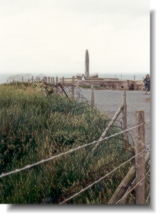 Frank South 2nd Ranger Bn Medic
Frank South 2nd Ranger Bn Medic
One of the men that landed with Colonel Rudder at the bottom of the cliffs at Pointe du hoc was Frank South. Much has already been written about the heroic fight of the Rangers at Pointe du hoc. Here the story of one of the medics of the second battalion is presented. South was a medic in HQ company. For D-day the Rangers had been taken from their usual companies and placed over the various landingcrafts. They were going to work whereever they were needed, regardless of company. The medics of the 2nd Bn had received the same training as all the other rangers, meaning that they were capable fighters that had medical knowledge beside their normal ranger training. South had had extensive training in treating the wounded in any way possible.
He recalls:
I had packed a huge mountain-pack with everything imaginable, from plasma to sulfathiazole powder. I carried this pack ashore with me. I also carried an expended aid pack that was issued to every medic.
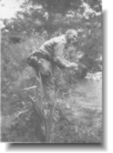 Once I stepped of the ramp of the LCA that had taken us to the beach, I became immediately fully engaged by the wounded on the beach. This was my first time in combat, but I don't remember having fear. I was far to busy treating the wounded than thinking about anything else. Sometimes it was difficult to keep the seriously wounded from proceeding on. Once I stepped of the ramp of the LCA that had taken us to the beach, I became immediately fully engaged by the wounded on the beach. This was my first time in combat, but I don't remember having fear. I was far to busy treating the wounded than thinking about anything else. Sometimes it was difficult to keep the seriously wounded from proceeding on.
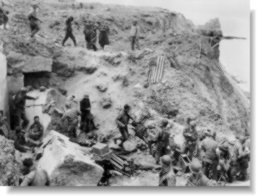 The beach was enfilated by machine-gunfire. Eventually this was knocked out by the rangers that had climbed the cliffs. However before the resistance was neutralized, the other medics and myself had a hard time protecting the wounded from getting wounded again. We placed all the wounded at the base of the cliff where they were safer. The beach was enfilated by machine-gunfire. Eventually this was knocked out by the rangers that had climbed the cliffs. However before the resistance was neutralized, the other medics and myself had a hard time protecting the wounded from getting wounded again. We placed all the wounded at the base of the cliff where they were safer.
About half an hour after our landing, the rangers on top of the cliff had neutralized the first German resistance and it was time for the medics and for the staff officers to climb the cliff.
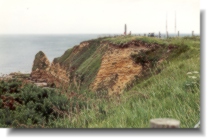 Once on the cliff, we the medics worked together to set up an aid station in an abandoned Anti-aircraft bunker. The staff officers of Colonel Rudder set the CP up in a shell crater, seaward of our aid post. Once on the cliff, we the medics worked together to set up an aid station in an abandoned Anti-aircraft bunker. The staff officers of Colonel Rudder set the CP up in a shell crater, seaward of our aid post.
We worked together as a team of six medics in the aid station. There was one medical officer, two NCO's and three PFC's. At the cry of medic, one or more of us would go out into the field to retrieve the wounded. The men on the line had their own medics with them there at that time. Our medical supplies in the aid station where limited, but somehow we managed.
On the second day we ran out of food. We did still have water, I can not recall where we got that, but it was there.
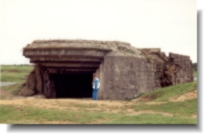 During one of the German counterattack, the Germans managed to penetrate our lines up to the perimeter of the aid station. At that point I took my brazzard of my arm, picked up my '45 went outside and helped to push the Germans back The brazzard with the red cross symbol was the only visible identification that you were a medic. During one of the German counterattack, the Germans managed to penetrate our lines up to the perimeter of the aid station. At that point I took my brazzard of my arm, picked up my '45 went outside and helped to push the Germans back The brazzard with the red cross symbol was the only visible identification that you were a medic.
On the fourth day of the battle, the 116th Infantry Regiment broke through to us. They send for boats to pick up the wounded from the cliff. After the wounded had been evacuated, we the rest of the surviving rangers could leave the cliff. Mission accomplished.
|
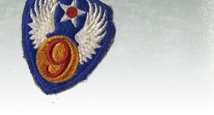
 Frank South 2nd Ranger Bn Medic
Frank South 2nd Ranger Bn Medic Once I stepped of the ramp of the LCA that had taken us to the beach, I became immediately fully engaged by the wounded on the beach. This was my first time in combat, but I don't remember having fear. I was far to busy treating the wounded than thinking about anything else. Sometimes it was difficult to keep the seriously wounded from proceeding on.
Once I stepped of the ramp of the LCA that had taken us to the beach, I became immediately fully engaged by the wounded on the beach. This was my first time in combat, but I don't remember having fear. I was far to busy treating the wounded than thinking about anything else. Sometimes it was difficult to keep the seriously wounded from proceeding on. The beach was enfilated by machine-gunfire. Eventually this was knocked out by the rangers that had climbed the cliffs. However before the resistance was neutralized, the other medics and myself had a hard time protecting the wounded from getting wounded again. We placed all the wounded at the base of the cliff where they were safer.
The beach was enfilated by machine-gunfire. Eventually this was knocked out by the rangers that had climbed the cliffs. However before the resistance was neutralized, the other medics and myself had a hard time protecting the wounded from getting wounded again. We placed all the wounded at the base of the cliff where they were safer.  Once on the cliff, we the medics worked together to set up an aid station in an abandoned Anti-aircraft bunker. The staff officers of Colonel Rudder set the CP up in a shell crater, seaward of our aid post.
Once on the cliff, we the medics worked together to set up an aid station in an abandoned Anti-aircraft bunker. The staff officers of Colonel Rudder set the CP up in a shell crater, seaward of our aid post. During one of the German counterattack, the Germans managed to penetrate our lines up to the perimeter of the aid station. At that point I took my brazzard of my arm, picked up my '45 went outside and helped to push the Germans back The brazzard with the red cross symbol was the only visible identification that you were a medic.
During one of the German counterattack, the Germans managed to penetrate our lines up to the perimeter of the aid station. At that point I took my brazzard of my arm, picked up my '45 went outside and helped to push the Germans back The brazzard with the red cross symbol was the only visible identification that you were a medic.